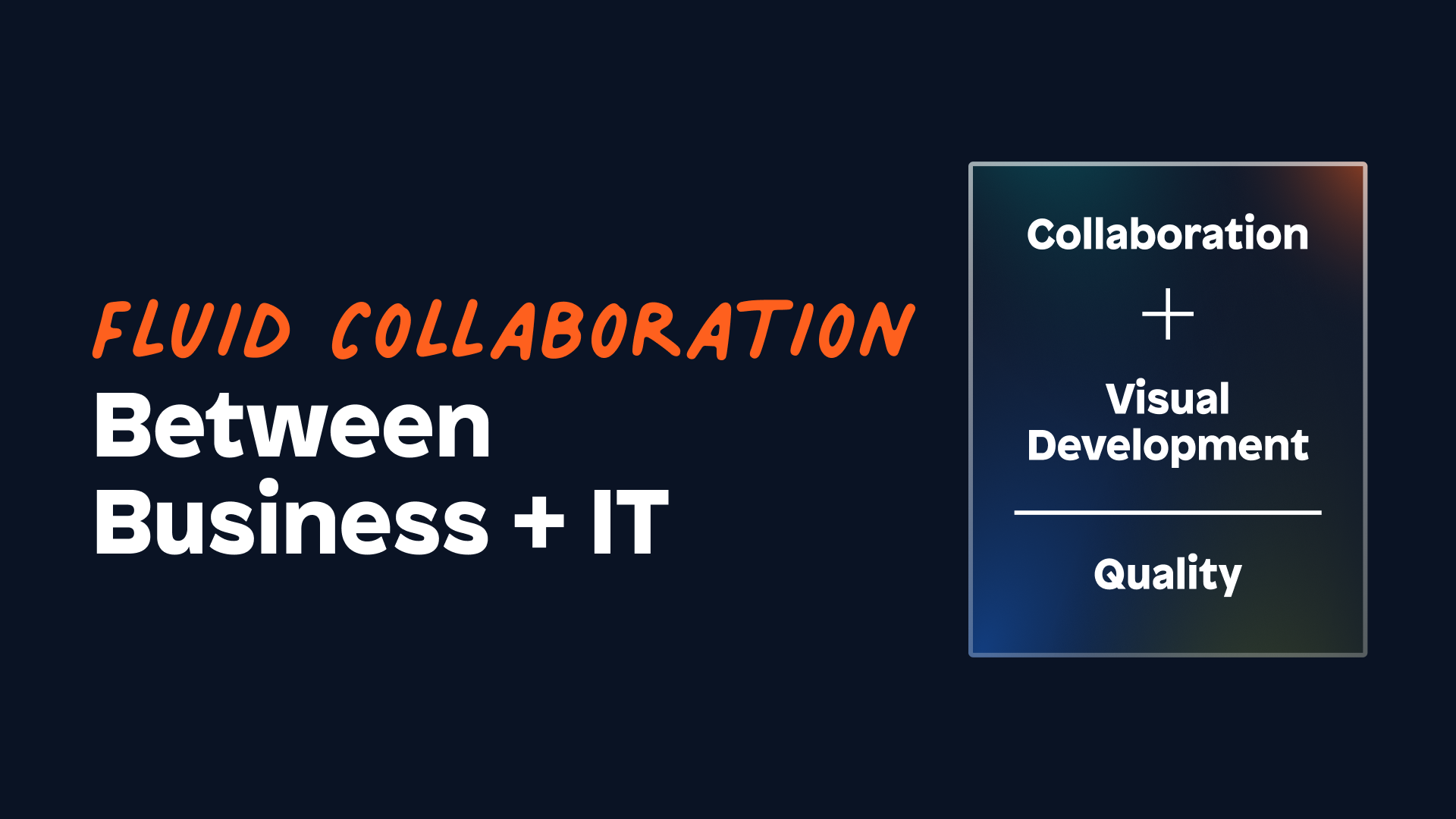5 Problems with Business/IT Collaboration (And How to Fix Them)

You’ve probably heard that “the sum is more than the whole of the parts.” When it comes to development, that’s true!
The days of business experts sitting in one part of the organization walled off from IT experts are over. Needs are getting more complex. Speed to market is more critical than ever.
So, let’s start here: Business-IT collaboration is critical to plan and execute a digital strategy.
According to Gartner, 73% of managers outside of IT want more business technologists on their teams.
But just saying it doesn’t make it so.
It’s like bringing a novice to a stove with some ingredients and saying, “Cook a five-star meal.” If you don’t know what you’re working with, how can you make the most of what you’ve got?
So, let’s look at the biggest problems and how to solve them.
5 Problems with Business/IT Collaboration
Collaboration done well can be a fantastic meal where the ingredients come together perfectly. It can also be a poorly put-together sauce or like mixing oil and water. Here are the top reasons collaboration breaks:
1. Communication
When you don’t speak a common language, it’s tough to work together. Translating business ideas to IT requirements is impossible without the proper comms. And that leads to applications that don’t accomplish what you need.
Simplification, visual modeling, and being able to see the same picture. These are things that make communication easier.
2. Priorities
Think about your organization and the teams you work with. Chances are different groups have different priorities and plans. Now, extrapolate that out across an enterprise. Welcome to dozens of competing needs, if not more.
Many businesses have something like a priority board where their digitization plans are. Great! But what if it’s not in a tool IT uses or has access to?
The right plan is critical. And so is a way to see plans and priorities.
3. Feedback
Spend a few minutes on social media, and you learn very quickly that many people have firm opinions on pretty much everything. The same thing applies to business and development.
So, how do you aggregate feedback? How do you prioritize it? How do people even give it? Is there a single source of truth, or are we taking everything we get?
Good feedback in means good development out. You can probably guess what bad feedback in does.
4. Systems
Almost every enterprise works in many different systems that do different things. So when you bring business and IT together, you might find that they’re not working in the same systems. Also, those systems may not speak with each other.
That creates a learning curve and a problem when you have to port things from one spot to the next (or worse, leave information spread across different locations).
5. Processes
You say, “Let’s bring experts from around the business together!” And your teams respond well. Well, now what?
Without the right processes around that, you’re no further ahead. We’re thinking about things like governance. Even the highest performing teams need a way to structure and a goal.
Bad ingredients + no recipe = no meal
If you cannot collaborate effectively, you’re hurting the business. It’s that simple, but we can quantify that in different ways.
A 2022 survey showed that one-third of projects are delayed by six months or more and that poor software quality cost businesses more than $2.4 TRILLION. To put that in perspective, Apple’s 2022 revenue was about $394 billion. So, organizations lost 5.84 Apple’s worth of cost through delays and bad software. A lot of that boils down to collaboration.
Lack of collaboration can also lead to a rise in shadow IT, which adds to the technical debt.
But collaboration is about people first, so look at it from that angle, too. When teams can’t work together effectively, it hurts morale and pits teams against each other. And that’s a spiral you don’t want to be a part of.
If we were in an infomercial, this would be the part where someone despairs, “There has to be a better way!”
There is. So let’s talk about it.
Make the most of your ingredients
Throughout this, keep in mind that everyone has a common goal. And that goal is software that benefits the business.
Want more data? Of course! Also, according to Gartner, teams that blend business and IT roles (you might have heard this called “fusion teams”) will be 50% likely to deliver positive outcomes over those created by IT alone.
You know the need. You see the demand. Now, you need the tool. And the tool is Mendix.

Mendix: Your collaboration partner
The Mendix platform enables collaboration throughout the development process. That allows your teams to handle even the most complex projects. Let’s look at our original problems and how Mendix addresses them.

- Communication: Because Mendix is visually based, development is easier to see and understand. All users can work on the same platform and provide direct feedback.
- Priorities: The Mendix Portfolio Management tool ties together strategy and execution. See across your landscape, identify gaps, and ensure teams are working on the projects that matter. And with more and more orgs using product roadmapping tools over agile planning tools to improve comms, you don’t want to fall behind.
- Feedback: On top of all your internal users being able to provide features, Mendix also offers App Insights. These can be built into your applications to gather feedback from end users. That goes right back into the platform. There, you track, monitor, and prioritize.
- Systems: Mendix can be your platform of truth that everyone uses. This could take the form of our built-in project management tool,
- Processes: Let’s go back to food. If your platform acts as your stovetop and cooking tools, your people as your ingredients, you still need a recipe. Mendix supports that with our Digital Execution Practice.
Collaboration: Prepare and enjoy!
Collaboration is crucial, and just talking about it isn’t enough. The successful enterprise is the one that’s able to take that talk and turn it into outcomes. You’ve seen the problems, you know why they matter, you’ve seen the solution. All that’s left is to make collaboration work for you.
